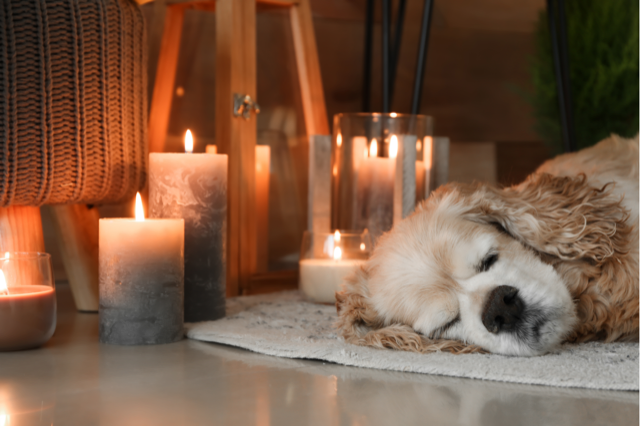
Indoor air quality can affect our pets’ health and ours. It has been suggested that the quality of the air in our homes may influence health dramatically. The increased harmful effects on our pets may be the result of pets spending a lot of time at home, which is especially true for indoor cats who never spend time outside and the fact that a pets’ metabolism is different than ours.
Although I love to burn candles at home as they create a welcoming and warm environment, they are one of the contributing factors to poor air quality in our homes. According to a recent study by the U.S. Consumer Product Safety Commission (CPSC), 40 percent of candles on the market contain lead wires inside their wicks. Most often, these candles are scented with fragrance oils that soften the wax, so manufacturers use lead to make the wicks firmer.
A candle with a lead-core wick releases five times the amount of lead considered hazardous for children and exceeds EPA pollution standards for outdoor air, says the CPSC. Exposure to high amounts of lead has been linked to hormone disruption, behavioral problems, learning disabilities, and numerous health problems in people and especially in children.
Yes, I think of my pets as my children and do love them. Most pets are similar to children in size and weight, so be sure to look for a “lead free” label on all the candles you buy.
To protect your pets, yourself, and your family, you’ll also want to look out for candles made of paraffin, a petroleum by-product, which releases carcinogenic soot when burned. This soot can cause respiratory problems and will aggravate any conditions of those who have asthma, lung, or heart problems.
Paraffin is the major ingredient in most conventional candles and is a sludge waste product from the petroleum industry. Paraffin releases carcinogenic chemicals when burned. The soot/fumes are similar to that released from a diesel engine and can be as dangerous as second-hand cigarette smoke. This can contribute to serious respiratory issues like asthma. A University of Michigan study in late 1999 found that 30% of candles in the USA still released lead into the air in amounts higher than is considered safe by the EPA. Personally, I’m not sure that I would consider there to be a “safe” level of lead in the air in my home. Legislation was passed in the USA to ban lead in wicks in 2003, but it is still present in some candles which make their way onto store shelves, particularly those that are imported.
Two other particularly toxic chemicals, benzene and toluene, are found in the sooty residue from burning candles. Benzene is a known carcinogen, and toluene affects the central nervous system. Other toxic chemicals that may be present in the paraffin mixture and released through burning include: Acetone, Trichlorofluoromethane, Carbon Disulfide, 2-Butanone, Trichloroethane, Trichloroethene, Carbon Tetrachloride, Tetrachloroethene, Chlorobenzene, Ethylbenzene, Styrene, Xylene, Phenol, Cresol, and Cyclopentene.
So, the next time you go out or online to pick up candles, make sure to purchase unscented bees wax candles that are better for the environment, for your pets and you!
